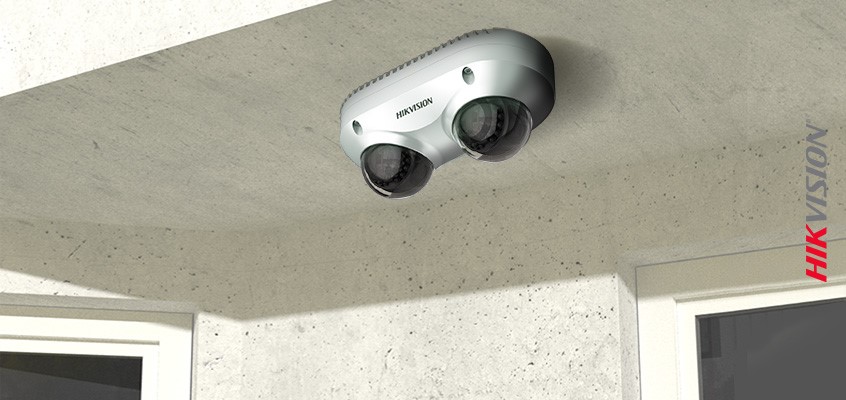New Hikvision Dual Lens PanoVu Panoramic Camera Offers Bi-Directional Video Security in One Unit
Available Now, 2-in-1 Camera Delivers Cost and Time Savings

City of Industry, CA (December 8, 2022) - Hikvision, a world-leading manufacturer and supplier of security products and solutions that deliver the ideal combination of high performance and extreme value, introduces its new Dual Lens PanoVu Panoramic Camera (DS-2CD6D42G0-I) for applications that require dual coverage with one camera. The two lenses in one design delivers lower installation costs and saves money by reducing the number of cameras required for comprehensive security.
“We’ve packed advanced, dual-lens technology into a compact unit that provides the coverage of two conventional cameras in one,” said John Xiao, Vice President of Marketing, Hikvision USA. “This unique design makes the PanoVu dual lens camera ideal for applications where bi-directional security is required, such as indoor hallways or large outdoor areas.”
The new Dual Lens PanoVu Panoramic Camera uses two 4 MP 1/2.7-inch progressive scan CMOS sensors to capture 2688x1520 resolution video per sensor at 24 fps, for a total resolution of 8 MP. The 3-axis gimbal adjustment and 3D DNR technology deliver clean, sharp images with 2-channel WDR continuing to provide clear imaging against strong backlight.
Other exciting features of the Dual Lens PanoVu camera include H.265 video compression technology, a built-in microphone for real-time security audio, and easy installation with Power-over-Ethernet (PoE) technology. This camera is also water and dust resistant (IP67) and vandal resistant (IK10) for use outdoors.
The Dual Lens PanoVu Panoramic Camera is currently in-stock and available now.
For more information please visit: Dual Lens PanoVu Panoramic Camera.
About Hikvision
Hikvision is a world leading manufacturer and supplier of security products and solutions. Featuring an extensive and highly skilled R&D workforce, Hikvision manufactures a full suite of comprehensive products and solutions for a broad range of vertical markets. In addition to security, Hikvision extends its reach to smart home tech, industrial automation, and automotive electronics industries. Hikvision solutions provide powerful business intelligence for end users, which can enable more efficient operations and greater commercial success. Hikvision encourages partners to take advantage of its many cybersecurity resources, such as the Hikvision Cybersecurity Center. For more information, please visit us at www.hikvision.com.
